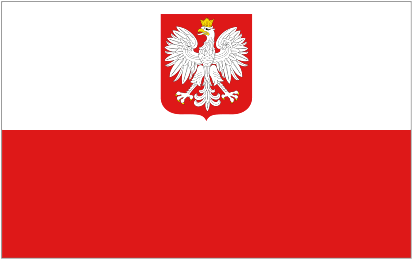
The Panek Family History
Click on the top tab first for initial information
Poland has a long and turbulent history of being and not being a unified sovereign county. Historically, Poland as a sovereign state begins with the Piast dynasty circa 966 AD.
•[966 – 1385] The Piast dynasty
•[1385 – 1572] The Jagiellion period
•[1572 – 1648] The Elective monarchy period
•[1748 – 1664] Deluge & decline
•[1764 – 1795] The three partitions
•[1795 – 1918] Partitioned between Russia, Prussia & Austrian empire.
•[1914 – 1918] World War I
•[1918 – 1939] The second republic established.
•[1939 – 1945] World War II
•[1945 – 1989] Communist Poland
•[1989 – present] The Third Republic established.
Following the First Partition of Poland in 1772, in an attempt to strengthen the greatly weakened Commonwealth, King Stanislaus Augustus put into effect a series of reforms to strengthen Poland’s military, political system, economy, and society. These reforms reached their climax with the enactment of the May Constitution in 1791, which established a constitutional monarchy with separation into three branches of government, strengthened the bourgeoisie and abolished many of the privileges of the nobility as well as many of the old laws of serfdom. In addition, to strengthen Poland’s international standings, King Stanislaw signed the Polish-Prussian Pact of 1790, ceding further territories to Prussia in exchange for a military alliance. Angered by what was seen as dangerous, Jacobin-style reforms, Russia invaded Poland in 1792, beginning the War in Defense of the Constitution. Abandoned by her Prussian allies and betrayed by Polish nobles who desired to restore the privileges they had lost under the May Constitution, Poland was forced to sign the Second Partition of Poland in 1793, which ceded Dobrzyn, Kujavia, and a large portion of Greater Poland to Prussia and all of Poland’s eastern provinces from Moldavia to Livonia to Russia, reducing Poland to one third of her original size prior to the First Partition.
Outraged with the further humiliation of Poland by her neighbors and the betrayal of the Polish nobility and emboldened by the French Revolution unfolding in France, the Polish masses quickly turned against the occupying forces of Prussia and Russia. Following a series of nationwide riots, on March 24, 1794, Polish patriot Tadeusz Kosciuszko took command of the Polish armed forces and declared a nationwide uprising against Poland’s foreign occupiers, marking the beginning of the Kosciuszko Uprising. Catherine II and Frederick William II were quick to respond and, despite initial successes by Kosciuszko’s forces, the uprising was crushed by November 1794. According to legend, when Kosciuszko fell off of his horse at the Battle oo Maciejowice, shortly before he was captured, he said “Finis Poloniae,” meaning “this is the end of Poland.”[2]

Ropczyce
Following the end of the Kosciuszko rebellion, Austria, Prussia, and Russia decided to put an end to the unrest by wiping Poland off of the map of Europe. On October 24, 1795, the representatives of the Russian Empire, the Austro-Hungarian Empire, and the Kingdom of Prussia assembled to write the treaty formally dissolving the Polish-Lithuanian Commonwealth and all of her institutions, though the conquering powers did not sign the treaty until January 26, 1797 in St. Petersburg. Despite a heated disagreement between Austria and Prussia over the division of land that almost led the negotiations to collapse, it was eventually agreed that Austria would receive the territories of Western Galicia and Southern Masovia, along with approximately 1.2 million people; Prussia received Podlachia, the remainder of Masovia, and Warsaw, with 1 million people; and Russia received the remainder, including the city of Vilnius and 1.2 million people Since Poland no longer existed as a national entity following the Kosciuszko Rebellion, the conquering powers found no need to force approval from a Polish representative as they had done with the previous partitions. The partition coalition forced King Stanislaw to abdicate and he retired to St. Petersburg as Catherine II’s trophy prisoner, where he died in 1798.
Austria, Russia, and Prussia sought to permanently erase the existence of Poland, even down to the country’s name, as proven by a secret and separate article signed by the partition coalition: "In view of the necessity to abolish everything which could revive the memory of the existence of the Kingdom of Poland, now that the annulment of this body politic has been effected…the high contracting parties are agreed and undertake never to include in their titles…the name or designation of the Kingdom of Poland, which shall remain suppressed as from the present and forever…"
The Third Partition of Poland ended the existence of an independent Polish state for the next 123 years. Immediately following the Third Partition, the occupying powers forced many Polish politicians, intellectuals, and revolutionaries to emigrate across Europe, subsequently named the Great Migration. These Polish nationalists participated in uprisings against Austria, Prussia, and Russia in former Polish lands, and many would serve France as part of Napoleon’s armies. In addition, Polish poets and artists would make the desire for national freedom a defining characteristic of the Polish Romanticist movement.
Poland briefly regained semi-autonomy in 1807 when Napoleon created the Duchy of Warsaw, but this effectively ended with the Congress of Vienna in 1815, with the creation of the Congress Kingdom of Poland in its place as a Russian puppet state. Even this, however, came to an end after a Polish insurrection in 1831, at which point Russia dissolved the Congress Kingdom and exacted multiple punitive measures on the Polish populace and making Poland an official part of the Russian Empire as opposed to a vassal state.
Poland would not regain full independence until the end of World War I when the signing of the Treaty of Versailles and the collapse of the Russian Empire allowed for the resurrection of Polish national sovereignty.


